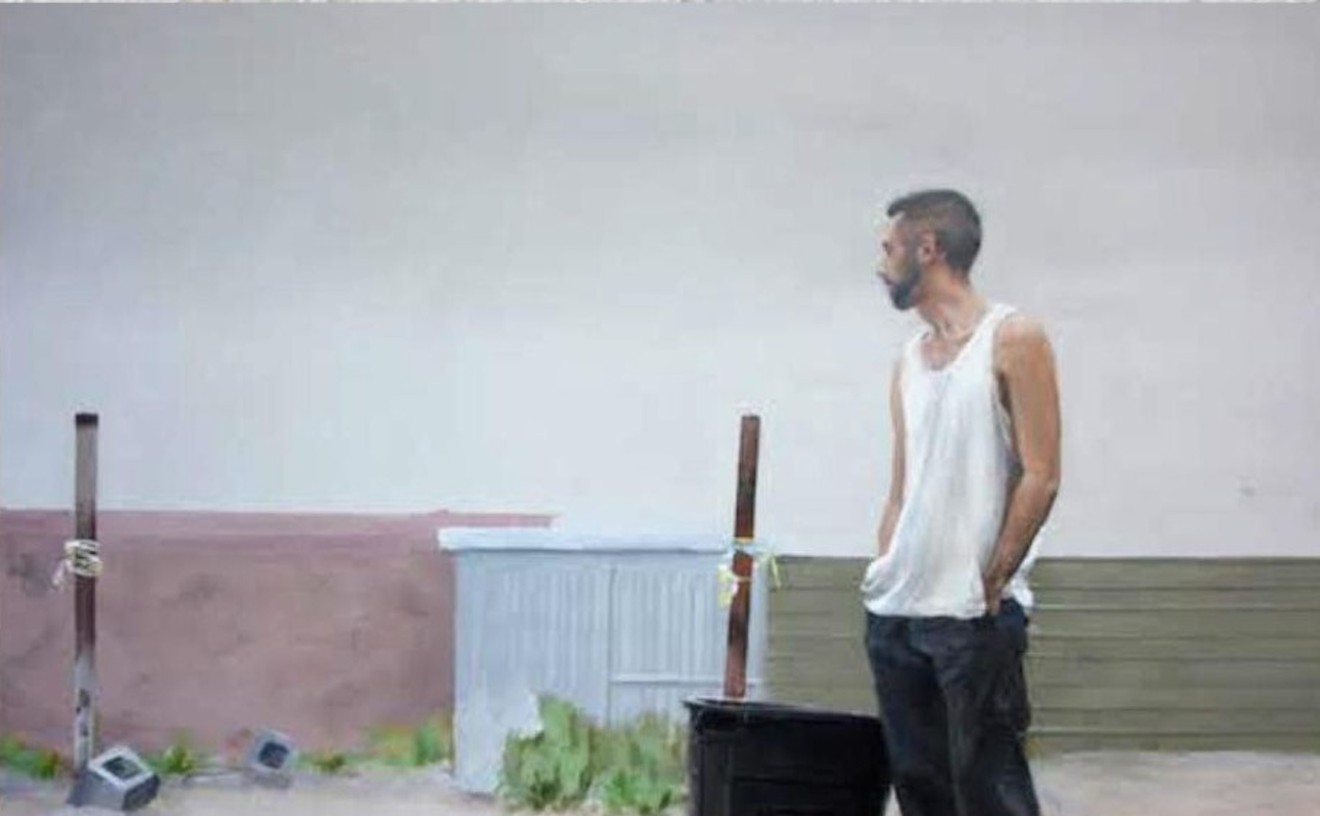Ando Hiroshige's Eight Views of Omi series from 1857 shows classic Japanese landscape scenes. The ominous charcoal gray, mountainous terrain frames a glistening body of water. The ocean's bright teal seamlessly moves to rich navy, making the stunning rouge of the cloud-filled sky pop. Considering the age of the print, it's amazing how vivid the colors still are. Among the scenes are boats, bridges and houses, all rendered in spindly thin lines — fragile man-made objects among nature's brooding force.
Another stunning work by Hiroshige is Peacock and Peonies from 1843. The hues haven't survived as well here, but the subject matter is so lovely that the wear and tear is easily forgivable. A large peacock seductively fills the page with a folded tail, plumage flowing down in what was once surely a cascade of amazing emerald, turquoise and indigo. Three beautiful blooming flowers bare their petals and cover the belly and feet of the bird. The composition is as gorgeous as the subject matter.
The other artist included, Katsukawa Shunsho, covers the popular Japanese woodblock print genre of actor portraits. In this series, the subjects are dressed as samurai warriors, aristocrats, and chivalrous commoners. These lack the dramatic color of the landscapes but capture plenty of drama with the facial expressions of the kabuki actors. Kabuki is a traditional Japanese theater practice known for exaggerated drama and elaborate makeup worn by the actors — all qualities expertly captured in the prints. In each, the figure is decked out in intricate costume and the face contorts into the character's intended persona.
The prints are gorgeous, easy to digest, and carry the importance of historic artifacts. They may not make you scratch your head but they surely will take your breath away.










